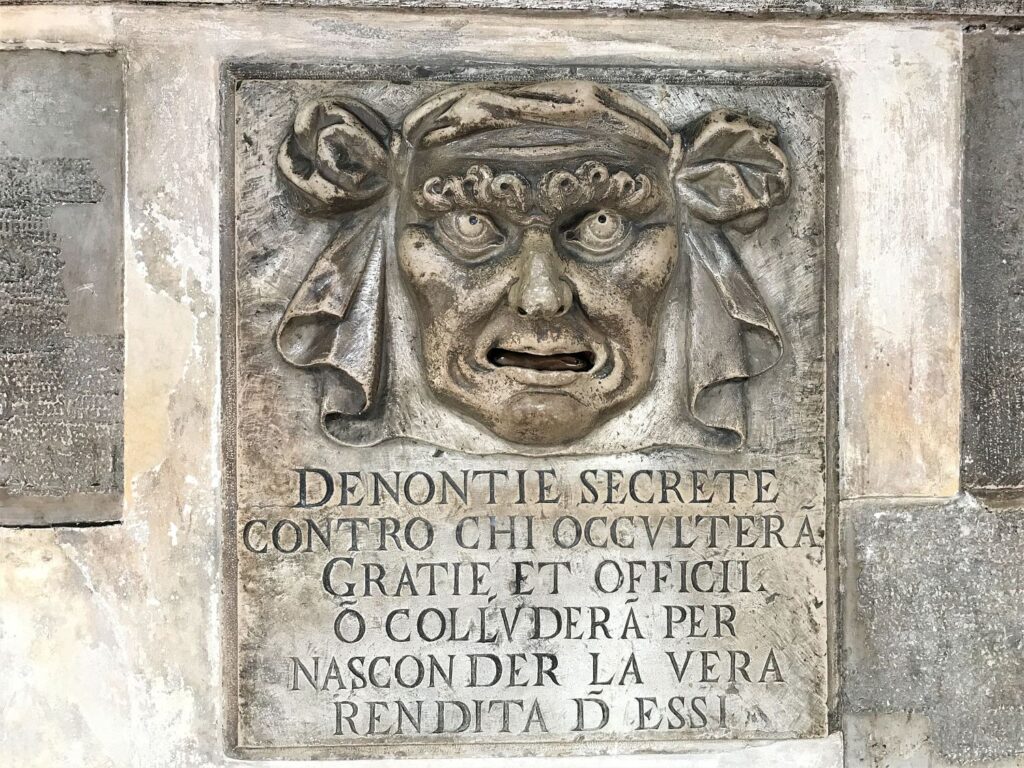They were particular containerssimilar to the current mailboxes, which, distributed around the city, were intended to collect anonymous complaints intended for the magistrates..
The nickname “Lions’ mouths” derives from the fact that they often had the appearance of wide open lion's jaws, above the wording of the type of complaints they were intended to collect.
Behind each of them there was a small wooden box whose opening was allowed to the magistrates. Magistrates and the Heads of the Sestieri..
Anyone had the right to write and post complaints: it is not difficult, therefore, to imagine how many honest people were reported because of envy or resentment of their fellow citizens.
To avoid this, in 1542 it was decided that the secret denunciations, to be considered, could not be anonymous but signed, and contain the names of at least two witnesses (unless they were related to conspiracies against the State).
The complaints ranged over the widest field of crimes, and were essential for the functioning of the special courts responsible for the security of the Republic: the State Inquisitors and, above all, the fearsome Council of Ten, the body responsible for investigating, even with exhausting interrogations, to obtain evidence of the allegations formulated in the letters.
The system was legal until the fall of the Republic in 1797: with the arrival of Napoleon many of the lion's heads, as well as the related inscriptions, were removed.
